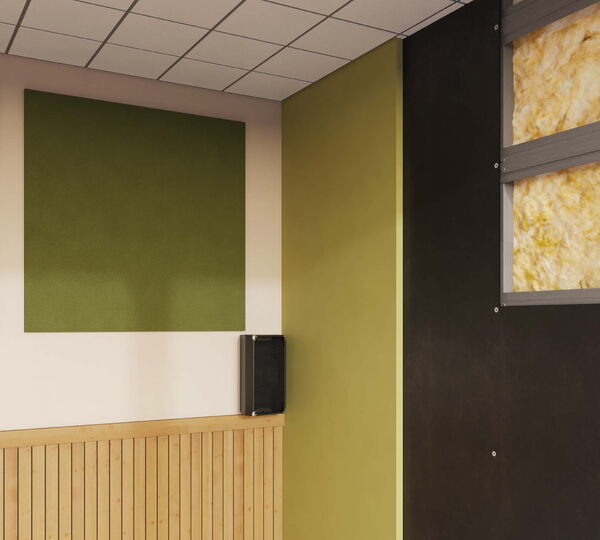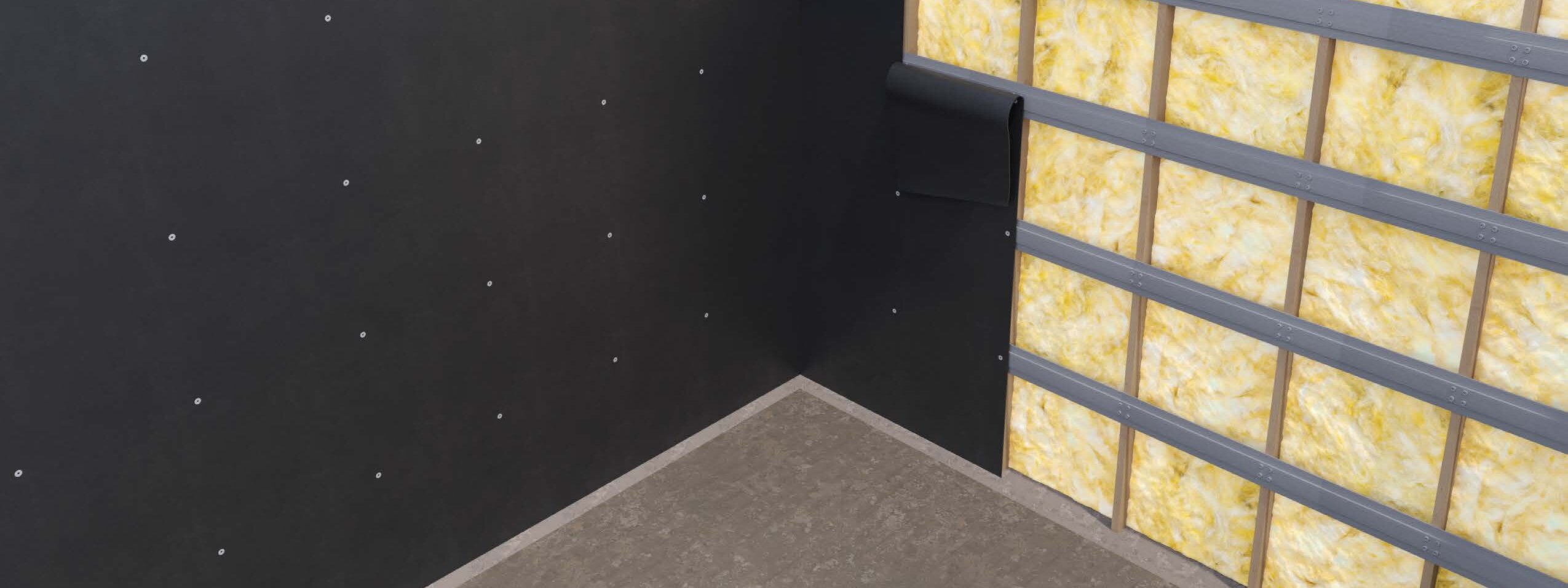The industry standard, economical, flexible, sound blocking materials
Mass loaded vinyl is a dense, limp material designed to add substantial mass to a structure without requiring significant space or structural reinforcement. Its key function is to block airborne sound transmission by increasing the sound transmission loss (STL) of a surface. It works by reducing the vibration of surfaces and preventing sound from passing through them, much like adding a thick layer of rubber to a wall or ceiling.
MLV is typically manufactured using a blend of heavy, yet flexible compounds such as vinyl and barium sulfate or calcium silicate, which allow it to remain pliable while delivering impressive acoustic performance. The result is a durable, non-fibrous material that can be cut to size and installed in a variety of applications where sound control is critical.
Key Benefits of Mass Loaded Vinyl
One of the primary advantages of MLV is its high density relative to thickness. Even at just 1/8" or 1/4" thick, MLV can significantly increase a partition’s ability to block sound. It's especially effective at reducing low- to mid-frequency noise, which includes common disturbances such as HVAC systems, conversations, machinery hum, and road noise.
Another major benefit is MLV's flexibility and ease of installation. It can be used in new construction or retrofit projects and can be layered between drywall, used as a standalone curtain, or combined with absorptive materials in composite panels. The material can be hung from tracks, wrapped around equipment, or mounted to studs or joists with minimal effort. This makes MLV a favorite for both contractors and facility managers looking for quick and effective noise mitigation.
MLV is also non-toxic, inert, and odorless, making it suitable for indoor use in spaces such as offices, classrooms, healthcare facilities, and residences. It doesn't contain fiberglass or other irritants, which simplifies installation and reduces health risks during and after application.
Reinforced vs. Nonreinforced MLV
At DDS Acoustical Specialties, we offer two types of MLV to suit different performance and environmental requirements: nonreinforced and reinforced.
Nonreinforced MLV is the most common and cost-effective option. It provides excellent sound blocking capabilities for indoor applications where the material will be installed in a protected environment. Because it lacks internal support, nonreinforced MLV is more flexible and easier to cut, but it is also more prone to tearing under tension or when exposed to harsh environmental conditions. For this reason, we recommend nonreinforced MLV for interior wall, ceiling, and floor assemblies where moisture and stress are not concerns.
Reinforced MLV, on the other hand, includes an internal support that increases its tensile strength and durability. This makes it the preferred choice for outdoor or semi-exposed environments such as construction sites, outdoor generator enclosures, rooftop mechanical barriers, and curtain systems that require frequent handling. Reinforced MLV is less likely to tear or stretch under its own weight and holds up better in environments where weather, vibration, or movement may impact performance.
Both types of MLV are available in standard and custom roll sizes, and can be combined with quilted fiberglass, aluminum facing, or other materials to create specialized acoustic curtain panels, composite barriers, or enclosure systems.


Specifications
Size: Rolls 54" x 30' (NR), 54" x 60' (R), Custom fabricated into panels
Thickness: 1/8", 1/4"
Weight: 1lb or 2lb/sqft
STC: 26, 29
Tensile Strengths (PSI): 220(NR), 1470(R)

Common Applications
- New Construction
- Retrofit Construction
- Walls, Ceilings, Floors
- Exterior Sound Barrier Panels
- Component in Sound Barrier Products
Frequently Asked Questions
A: Mass loaded vinyl is used as a noise barrier to block sound transmission in walls, ceilings, floors, equipment enclosures, and around ductwork. It's ideal for both commercial and residential applications where reducing airborne noise is essential.
A: MLV can be nailed, screwed, stapled, or adhered with construction adhesive, depending on the surface and application. It can also be hung on grommets or mounted to a frame as a curtain panel. Sealing edges and overlaps is essential for achieving optimal performance.
A: Yes. For effective sound blocking, the entire surface of a wall, ceiling, or floor must be covered without gaps or unsealed edges. Any openings or partial coverage will significantly reduce the barrier's effectiveness
A: Yes, many types of MLV offered by DDS Acoustical Specialties are available with Class A fire ratings, making them suitable for use in commercial buildings and environments with strict safety codes.
A: Yes. MLV is non-toxic, odorless, and does not contain fiberglass or irritants, making it safe for installers and building occupants. It requires no special handling beyond basic safety precautions for cutting and securing the material.

